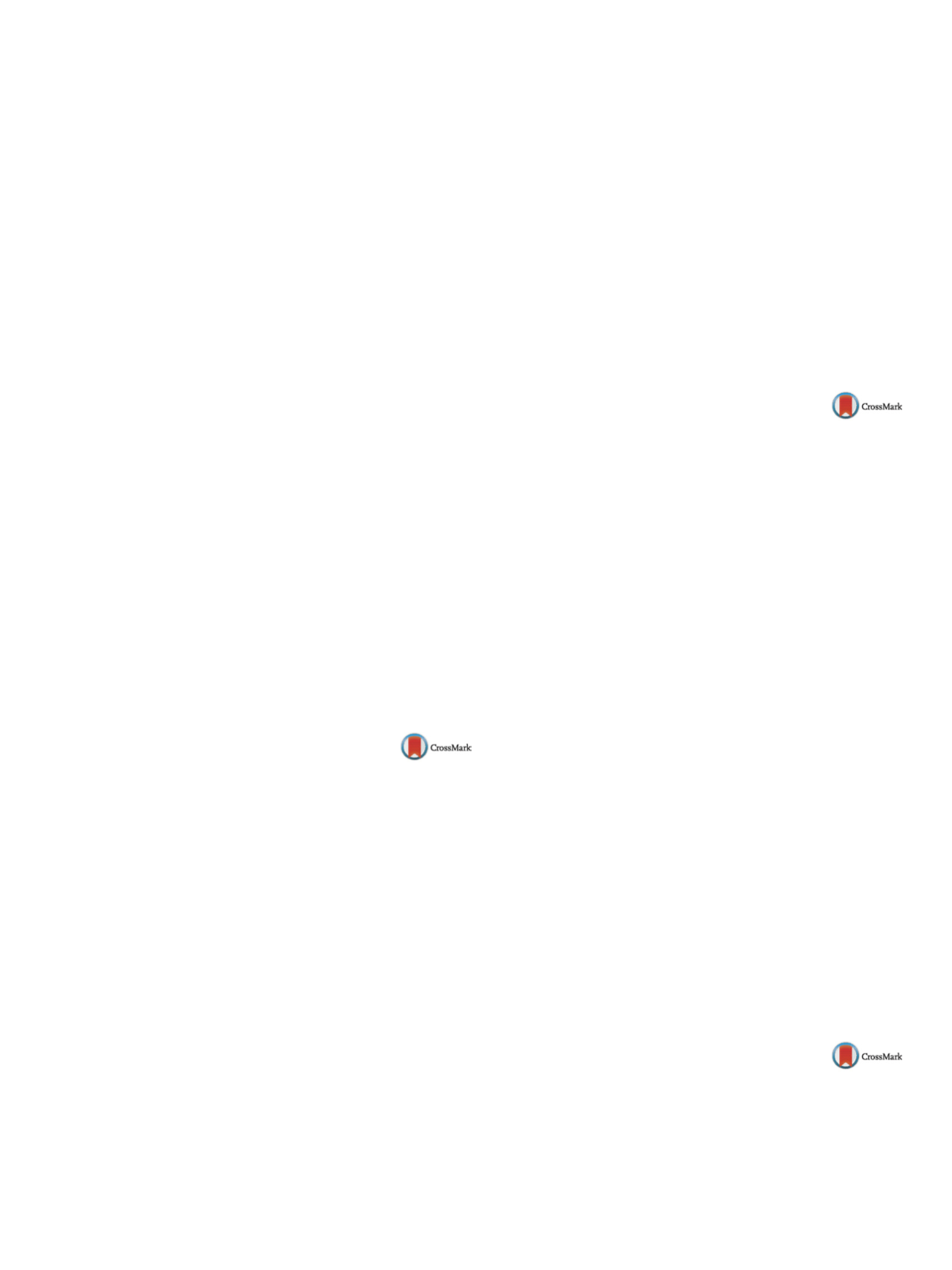

25th European Congress of Psychiatry / European Psychiatry 41S (2017) S303–S364
S305
N. Smaoui , N. Charfi
∗
, M. Turki , M. Maâlej-Bouali , L. Zouari ,
N. Zouari , J. Ben Thabet , M. Maâlej
Hedi Chaker university hospital, department of psychiatry C, Hedi
Chaker university hospital, Sfax, Tunisia
∗
Corresponding author.
Introduction
It is widely recognized that parents and peers play
a critical role in the adolescent’s introduction to alcohol.
Objectives
The aim of the study was to examine the relationship
of parental and peers drinking to adolescent drinking behavior.
Methods
A cross-sectional study was carried out in four colleges
and schools in Sfax in Tunisia, in May and June 2016. The sample
consisted of 317 pupils, and was determined through a simple
randomized sampling. These adolescents were asked to answer a
self-administered questionnaire, after their consent. Alcohol use
disorders identification test (AUDIT) was used to evaluate alcohol
dependence.
Results
The mean age was 16 years, with a sex-ratio of 1.07.
The participants reported having drunk alcohol at least once in
18.9% of cases and 41.66% of them still consume. According to
AUDIT, 1.6% of alcohol users presented an alcohol misuse and
21.6% presented dependence. They reported that parents’ atti-
tude toward their alcohol use was favorable in 27.11% of cases.
Among dependent adolescents, the prevalence of fathers’ alcohol
consumption was 20% while that of friends was 70%. Adolescent
drinking was significantly correlated to fathers, mothers and peers
drinking (
P
< 0.001,
P
= 0.004,
P
< 0.001 respectively), mothers and
peers smoking (
P
= 0.05,
P
< 0.001 respectively), fathers and peer’s
cannabis use (
P
< 0.001,
P
< 0.001 respectively).
Conclusion
Findings suggest that negative family and peers
influence increased risk of alcohol consumption in adolescents.
Understanding the influences on parents’ beliefs about their chil-
dren’s drinking and the functions of social networks in preventing
alcohol consumption may be necessary to address adolescent risky
drinking.
Disclosure of interest
The authors have not supplied their decla-
ration of competing interest.
http://dx.doi.org/10.1016/j.eurpsy.2017.02.195EW0582
Drug metabolizing enzyme and
transporter genes associated with
plasma risperidone level in Thai
autism spectrum disorder
C. Sukasem
Faculty of medicine Ramathibodi hospital, Pathology, Bangkok,
Thailand
Background
The associations between genetic variants of drug
metabolizing enzyme and transporter (DMET) genes and steady-
state plasma concentrations of risperidone, 9-hydroxyrisperidone,
total active-moiety, and metabolic ratio remain unclear.
Objective
The objective of the present study was to present the
results of the association between genetic variants of DMET gene
and steady-state plasma concentration risperidone and its meta-
bolite using Affymetrix DMET Plus genotyping microarray.
Methods
Subjects eligible for this study included male and
female adolescents with ASD diagnosed according to the Dia-
gnostic and Statistical Manual of Mental Disorders, Fourth Edition
(DSM-IV) criteria and being treated with risperidone for at least
4 weeks prior to the blood sample collection. Blood samples
were drawn prior to the next dose of risperidone intake to
determine the steady-state plasma trough concentrations of
risperidone and 9-hydroxyrisperidone. Genotyping profile was
obtained using the microarray. Steady-state plasma risperidone
and 9-hydroxyrisperidone were measured using liquid chromato-
graphy/tandem mass spectrometry (LC-MS/MS) assay.
Results
The polymorphisms of UGT2B4, CYP2D6 were highly
associated with metabolic ratio. Of all the DMET analysis, ABCB11
(3084A > G, 420A > G, 368G > A, and 236G > A) and ADH7 (690G > A
and –5360G > A) were found to be associated with plasma concen-
trations of risperidone (
P
< 0.01). In addition, 6 genetic variations
among the SLC transporter family were associated with the plasma
concentration of 9-hydroxyrisperidone.
Discussions
This study provides a pharmacogenomic approach
to investigate further among the DMET genetic variants which
influence plasma concentration of risperidone. The treatment of
ASD should be based on genetic factors making the challenge
of psychopharmacological treatment more efficacious with lesser
adverse events.
Disclosure of interest
The author has not supplied his/her decla-
ration of competing interest.
http://dx.doi.org/10.1016/j.eurpsy.2017.02.196EW0583
Exome sequencing detection of
genetic markers for Thai autism
spectrum disorder
C. Sukasem
Faculty of medicine Ramathibodi hospital, Pathology, Bangkok,
Thailand
Background
Autismspectrumdisorders (ASD) are neurodevelop-
mental disorders characterized by abnormalities in 3 domains;
social interaction, communication/language, and restricted and
repetitive behavior. The study of ASD prevalence in Thailand sho-
wed that it is approximately 9.9 children per 10,000 population for
children 1–5 years old. ASD has a strong genetic basis, although the
genetics of autism are complex and it is unclear. The objective of
this study was to identify the genetic markers of Thai ASD.
Methods
Exome sequencing was performed with twelve unre-
lated ASD affected individuals from twelve families. Each sample
was sequenced on SOLiD 5500xl genetic analyzer, and the resulting
data was processed and analyzed on LifeScope Genomic Analy-
sis software. Exome sequencing with two additional samples was
performed Ion Proton System and the data was processed on Ion
Reporter server. Tertiary data analysis with all fourteen exome
sequencing data were performed by using Golden Helix software.
In filtering process, datawere annotated to various databases inclu-
ding UCSC KnownGenes for non-coding and synonymous variants
filter, 1000 Genomes Project for high frequency variants filter, and
dbNSFP for functional prediction.
Results
The genetic markers were identified for Thai ASD asso-
ciated variants (c.2014G > A in EIF2AK3, c.2951G > A in FGD6, and
c.6119A > G in CHD8).
Conclusions
these geneticmarkerswere themost possible of cau-
sing variants Thai. We also demonstrated a potential of exome
sequencing and bioinformatics pipeline to identify the possible
causative variants of ASD, which could by applied in the case that
unable to identified variants by other technique.
Disclosure of interest
The author has not supplied his/her decla-
ration of competing interest.
http://dx.doi.org/10.1016/j.eurpsy.2017.02.197EW0584
Hyperuricemia and metabolic adverse
effect in children and adolescents
with autism spectrum disorder
treated with risperidone
C. Sukasem
Faculty of medicine Ramathibodi hospital, Pathology, Bangkok,
Thailand


















